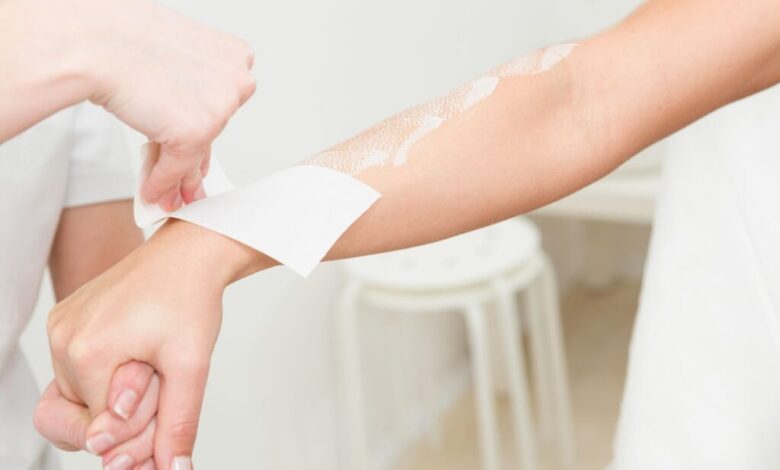A Guide To Waxing



Waxing has been used for centuries to remove hair. It is an effective method to achieve smooth, hair-free skin. Whether you’re looking to wax your legs, bikini area, eyebrows, or any other part of your body, this guide will provide you with essential information to ensure a successful and comfortable waxing experience.
- Preparation is Key
Before you start waxing, it’s crucial to prepare your skin. Make sure your hair is long enough for the wax to grip onto, typically around 1/4 to 1/2 inch. Exfoliate the area a day or two before waxing to remove dead skin cells, which can lead to ingrown hairs. Cleanse the skin to remove any dirt, oils, or lotions that may interfere with the wax’s adhesion.
- Choose the Right Wax
The two main types of wax are soft wax and hard wax. Soft wax is applied with a strip and removed with a cloth, while hard wax hardens and is removed without a strip. The choice between the two depends on personal preference and the area you’re waxing. Hard wax tends to be gentler on the skin and is often recommended for sensitive areas like the face and bikini line.
- Temperature Matters
If you’re using soft wax, ensure it’s at the right temperature. Overheated wax can cause burns, while wax that’s too cool won’t adhere properly. Follow the manufacturer’s instructions for heating and maintain a consistent temperature throughout your waxing session.
- Application Technique
When applying wax, spread it in the direction of hair growth and make sure to leave a small tab at the end for easier removal. Apply the wax in small, manageable sections to prevent uneven results and minimize discomfort.
- Proper Removal
To remove the wax, hold your skin taut with one hand and use the other to pull the wax off swiftly in the opposite direction of hair growth. Pull the strip parallel to the skin’s surface rather than straight up to reduce pain and the risk of breaking hair. Repeat this process until you’ve removed all unwanted hair.
- Post-Wax Care
After waxing, soothe your skin with a cooling gel or aloe vera to reduce redness and inflammation. Avoid hot baths, saunas, or sun exposure for at least 24 hours after waxing because your skin may be more sensitive during this time. Be sure to keep on top of exfoliation to prevent ingrown hairs, and moisturize to keep your skin hydrated.
- Maintenance and Timing
The frequency of your waxing sessions will depend on how quickly your hair grows back. You can expect results to last anywhere from two to six weeks. It’s essential to allow your hair to grow to the proper length between sessions for effective waxing.
- Consider Professional Waxing
While many people wax at home, there are advantages to seeking professional waxing services like those at utopiabeautique.com. Licensed estheticians have the experience and expertise to ensure a smoother, less painful experience with minimal risk of complications.
- Possible Side Effects
Waxing, like any hair removal method, can have side effects. Some people experience redness, irritation, or ingrown hairs. These issues can often be prevented or minimized with proper pre and post-wax care. If you’re prone to skin sensitivities or have a skin condition, consult a dermatologist before waxing.
- Know When to Seek Help
If you experience severe pain, blistering, or signs of infection after waxing, consult a medical professional promptly. These symptoms could indicate an adverse reaction or infection that requires treatment.



